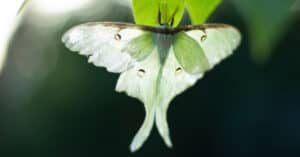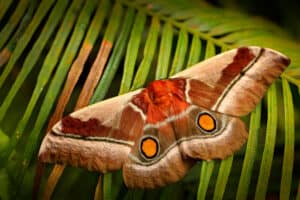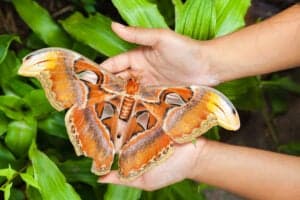When you hear the name ‘woolly bear’ does your mind instantly go to a furry little bear? Perhaps you imagine something big and ferocious? If you thought of either one, then you’ll be surprised to find out that neither one is what a woolly bear actually is!
The Woolly Bear (also known as the Banded Woolly Bear) inhabits lands all throughout the United States, southern Canada, and Mexico. They are the immature caterpillar form of the Isabella Tiger Moth. These cute little caterpillars have fuzzy bristles on both ends that are also black on both ends and reddish-brown in the center.
Woolly bear caterpillars develop from eggs produced by a female moth during warm weather months. When spring approaches, they spin fuzzy cocoons inside which they will develop into full-grown moths.
Woolly bears, according to mythology, may even forecast the winter! Some predict a mild winter if the middle brownish-red band is wide. The darker the ring, the harsher the winter will be.
So what do woolly bears eat? What makes them such an interesting type of caterpillar? We’re here to shed light on everything woolly bear related in this article.
What Do Woolly Bears Eat?
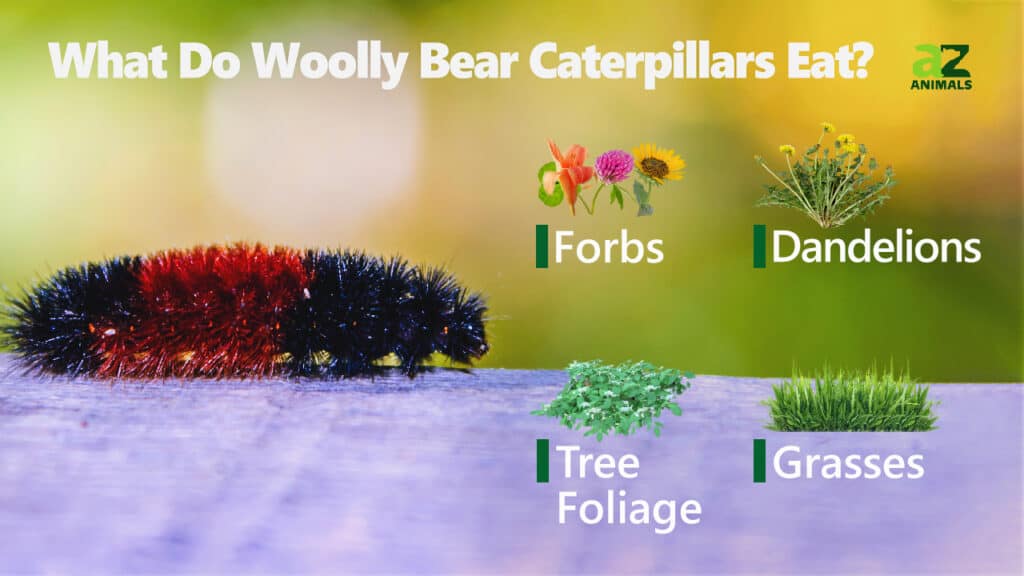
Woolly bears eat a diet that consists of plants, herbs, and other foods. They are predominately herbivores. Even though they spend most of their time on the ground, they may occasionally forage on trees.
Woolly bears eat a variety of foods, including:
- Herbaceous plants: Woolly bears like to feed on low-growing, seed-bearing plants with leaves rather than blades. Lamb’s quarters, violets, clovers, dandelions, nettles, burdock, yellow dock, curly dock, and other natural plants are their favorites to munch on. They will also eat leafy garden plants such as spinach, cabbage, various greens, garden herbs, and sunflowers on occasion.
- Grass, grains, and forbs: Woolly bears will consume grass and grains in the absence of typical dietary sources. These plants include both wild grasses and farmed grains like maize and barley. Because they only consume the leaves, they will only eat grasses that are in their leafy green stage.
- Trees and tannins: Although woolly bears prefer to stay on the ground, they can occasionally be observed grazing on the leaves of shrubs and trees. They prefer the sweet flavor of maple, elm, and birch tree leaves and are rarely if ever interested in fruit and ornamental trees.
This moth might be found practically anyplace that plants grow, based on the caterpillars’ vast choice of plants that it will feed on. The Isabella tiger moth, the adult form of the woolly bear caterpillar, does not feed and lives for only about a week. Its mission is to locate a partner and lay eggs as quickly as possible.
Are Woolly Bears Dangerous to Humans?
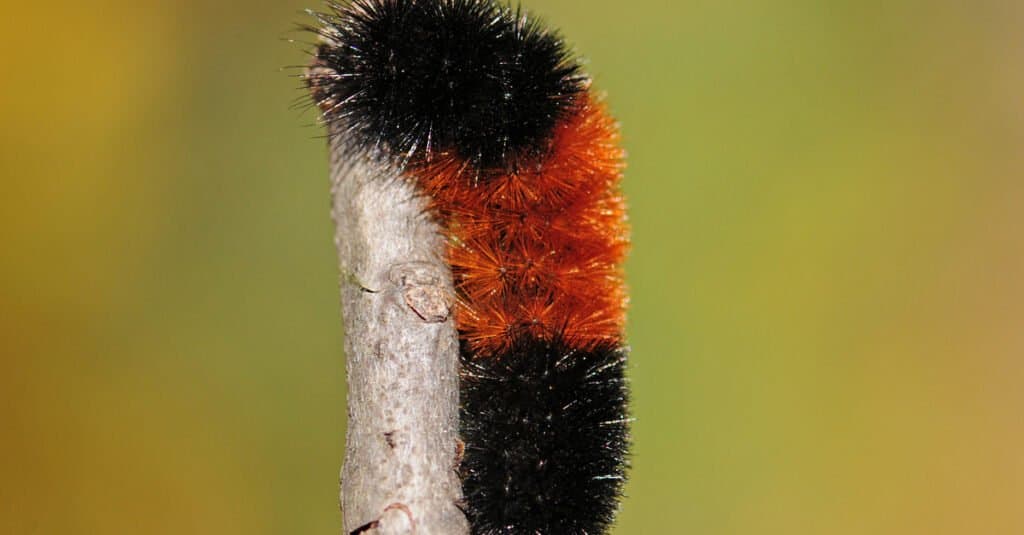
.
©Nancy Bauer/Shutterstock.com
Woolly bears are actually one of the most harmless insects that you can interact with. They are not poisonous. However, some persons with sensitive skin may get dermatitis after touching the caterpillar’s bristles. This is what may have started the false idea that woolly bears are toxic. A woolly bear, unlike other hairy caterpillars, is not dangerous.
However, although they are not poisonous, it is smart to keep them away from pets, especially your dog. If your dog is the type to snack on random things then this could present a problem. This is because the woolly bear’s bristles may become lodged in their throat. This may result in an allergy, but it is more likely to cause coughing, choking, and vomiting.
What Predators Eat Woolly Bears?
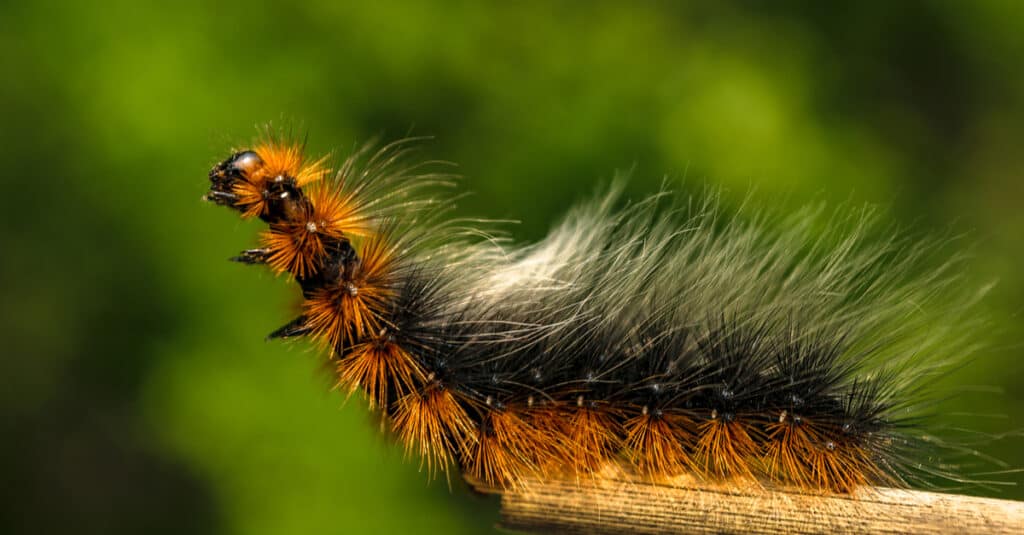
©AlbertMi/Shutterstock.com
Now that we better understand what woolly bears eat, let’s explore how they fit into the food chain.
As a tiny critter, you can bet that the woolly bear is a popular meal choice for many larger predators. The woolly bear’s predator list includes parasitic wasps, mantids, birds, and flies.
The rigid hairs of the woolly bear provide a significant protection against adversaries such as yellow jackets and other insects. Caterpillars defend their sensitive organs by curling into a ball and positioning their bristles on the exterior.
Another interesting thing that woolly bears can do to save themselves from parasitic predators is to become their own doctors! Yes, you read that right. If they become infected with specific parasites, they may provide “medicine” to themselves.
They accomplish this by consuming the leaves of plants containing compounds known as beneficial alkaloids, such as comfrey, borage, groundsel, and others. Eating the leaves of these plants then heals the caterpillar of the parasitic invasion.
What to Feed Woolly Bears as a Pet
Woolly bears can be kept as insect pets for several months while they finish out their life cycle.
If you take care of them correctly, you’ll be able to witness them as they go through their metamorphosis and become adult moths. As with any animal, a proper diet goes a long way with keeping the woolly bear healthy and happy. Now that you know what woolly bears eat, it’ll be easier to know what exactly to feed them!
For starters, to construct a cocoon, your caterpillar will require a twig. In the caterpillar’s container, place a short twig or branch from outside. Angle the branch diagonally so that the caterpillar may crawl onto it when it’s ready to construct its cocoon.
Once they have their twig, you can then begin to feed them. Caterpillars will thrive on their original host plants. Take some of the leaves and plants from the area where you discovered your caterpillar and fill the caterpillar’s container with them. As we mentioned, woolly bear caterpillars consume flowers and grass, so bring those in as well. Dandelions, grass, plantains, and burdock can all be beneficial to their survival. Every day feel free to bring in new flowers.
The photo featured at the top of this post is © Kimberly Boyles/Shutterstock.com
Thank you for reading! Have some feedback for us? Contact the AZ Animals editorial team.




